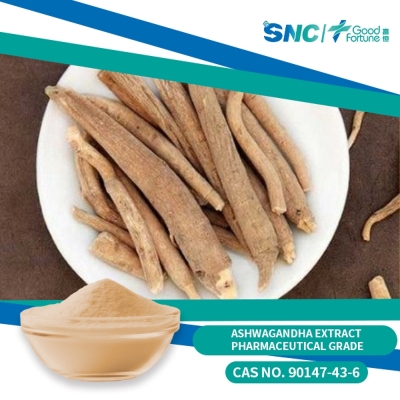-
Categories
-
Pharmaceutical Intermediates
-
Active Pharmaceutical Ingredients
-
Food Additives
- Industrial Coatings
- Agrochemicals
- Dyes and Pigments
- Surfactant
- Flavors and Fragrances
- Chemical Reagents
- Catalyst and Auxiliary
- Natural Products
- Inorganic Chemistry
-
Organic Chemistry
-
Biochemical Engineering
- Analytical Chemistry
- Cosmetic Ingredient
-
Pharmaceutical Intermediates
Promotion
ECHEMI Mall
Wholesale
Weekly Price
Exhibition
News
-
Trade Service
Click on the blue letters to pay attention to the microglia in our physiological state through their small branches to perceive the changes in their microenvironment.
Its dynamic process is regulated by the concentration of ATP, chemokines, neurotransmitters, and extracellular potassium
.
Microglia exhibit two modes of movement: they continuously stretch and retract their branches to sense changes in the brain
.
In multiple sclerosis (MS), activated microglia can cause neuron loss, but they also remove myelin and neuronal debris
.
Microglia can contact with neuron cell bodies, synapses, and axon initiation segments and perform corresponding functions
.
Myelin sheath is not a continuous structure.
There are Langfei knots at intervals, where sodium ion channels, ankyrin, fascin, etc.
are densely located
.
Astrocytes contact with Langfei junction to regulate the length of their nodes, and oligodendrocytes also have contact with Langfei junction
.
On September 1, 2021, A.
Desmazières of the Sorbonne University in France revealed that there is a physical connection structure between microglia and the Langfei junction, which depends on the potassium ion channel on the Langfei junction
.
This stable connection structure is conducive to remyelination
.
The direct contact of microglia with Langfei's section by immunofluorescence experiments revealed that about 26.
7% of Langfei's sections were in direct contact with microglia in the mouse cortex, cerebellum, and corpus callosum
.
In addition, a single Langfei node can have physical contact with astrocytes, oligodendrocytes, etc.
These results indicate that Langfei knots can be used as the "hub" of neuron-glia communication
.
This connection between Langfei junction and microglia is also present in human white matter
.
Subsequent two-photon microscopy in vivo imaging revealed that this contact between microglia and Langfei junctions does not occur randomly, but can exist continuously and stably
.
In the lysophosphatidylcholine-induced demyelination model, the proportion of the stable connection structure is significantly reduced, while in the process of remyelination, the proportion of the connection structure is significantly increased
.
Multiple molecular signals regulate the structural connection between neurons and microglia, including CX3CR1, P2Y12, and P2Y13
.
The migration of microglia depends on the activation of P2Y12 receptors in microglia
.
The researchers found that knocking out CX3CR1 did not affect the structural interaction between microglia and Langfei junctions
.
Inhibition of P2Y12 or P2Y13 purinergic receptors of microglia does not affect the contact of microglia with Langfei junction
.
After inhibiting neurons, the contact between microglia and Langfei junctions decreased.
However, the interaction between microglia and Langfei junctions increased after promoting neuronal activity in the in vitro experiment, and this interaction was weakened after inhibiting neurons
.
This indicates that neuronal activity can regulate the dynamic contact between microglia and Langfei junction
.
The extracellular potassium concentration can regulate the dynamics of microglia
.
Potassium ion channel inhibitors can significantly reduce the dynamic contact between microglia and Langfei junctions
.
The resting potential of microglia is maintained by a two-porous potassium channel (THIK-1) that is inhibited by a two-porous domain halothane
.
Blocking the potassium ion channel will also reduce the dynamic contact between microglia and Langfei junction
.
In the demyelination model, potassium channel inhibitors or blocking the THIK-1 channel reduce the rate of remyelination, which is mainly due to hindering the transition of microglia from a pro-inflammatory state to a pro-myelinating state
.
In this paper, it is found that there is physical contact between microglia and Langfei junction, which further enriches the signal pathway of neuron-glia interaction
.
[References] 1.
https://doi.
org/10.
1038/s41467-021-25486-7 The pictures in the text are from the references
Its dynamic process is regulated by the concentration of ATP, chemokines, neurotransmitters, and extracellular potassium
.
Microglia exhibit two modes of movement: they continuously stretch and retract their branches to sense changes in the brain
.
In multiple sclerosis (MS), activated microglia can cause neuron loss, but they also remove myelin and neuronal debris
.
Microglia can contact with neuron cell bodies, synapses, and axon initiation segments and perform corresponding functions
.
Myelin sheath is not a continuous structure.
There are Langfei knots at intervals, where sodium ion channels, ankyrin, fascin, etc.
are densely located
.
Astrocytes contact with Langfei junction to regulate the length of their nodes, and oligodendrocytes also have contact with Langfei junction
.
On September 1, 2021, A.
Desmazières of the Sorbonne University in France revealed that there is a physical connection structure between microglia and the Langfei junction, which depends on the potassium ion channel on the Langfei junction
.
This stable connection structure is conducive to remyelination
.
The direct contact of microglia with Langfei's section by immunofluorescence experiments revealed that about 26.
7% of Langfei's sections were in direct contact with microglia in the mouse cortex, cerebellum, and corpus callosum
.
In addition, a single Langfei node can have physical contact with astrocytes, oligodendrocytes, etc.
These results indicate that Langfei knots can be used as the "hub" of neuron-glia communication
.
This connection between Langfei junction and microglia is also present in human white matter
.
Subsequent two-photon microscopy in vivo imaging revealed that this contact between microglia and Langfei junctions does not occur randomly, but can exist continuously and stably
.
In the lysophosphatidylcholine-induced demyelination model, the proportion of the stable connection structure is significantly reduced, while in the process of remyelination, the proportion of the connection structure is significantly increased
.
Multiple molecular signals regulate the structural connection between neurons and microglia, including CX3CR1, P2Y12, and P2Y13
.
The migration of microglia depends on the activation of P2Y12 receptors in microglia
.
The researchers found that knocking out CX3CR1 did not affect the structural interaction between microglia and Langfei junctions
.
Inhibition of P2Y12 or P2Y13 purinergic receptors of microglia does not affect the contact of microglia with Langfei junction
.
After inhibiting neurons, the contact between microglia and Langfei junctions decreased.
However, the interaction between microglia and Langfei junctions increased after promoting neuronal activity in the in vitro experiment, and this interaction was weakened after inhibiting neurons
.
This indicates that neuronal activity can regulate the dynamic contact between microglia and Langfei junction
.
The extracellular potassium concentration can regulate the dynamics of microglia
.
Potassium ion channel inhibitors can significantly reduce the dynamic contact between microglia and Langfei junctions
.
The resting potential of microglia is maintained by a two-porous potassium channel (THIK-1) that is inhibited by a two-porous domain halothane
.
Blocking the potassium ion channel will also reduce the dynamic contact between microglia and Langfei junction
.
In the demyelination model, potassium channel inhibitors or blocking the THIK-1 channel reduce the rate of remyelination, which is mainly due to hindering the transition of microglia from a pro-inflammatory state to a pro-myelinating state
.
In this paper, it is found that there is physical contact between microglia and Langfei junction, which further enriches the signal pathway of neuron-glia interaction
.
[References] 1.
https://doi.
org/10.
1038/s41467-021-25486-7 The pictures in the text are from the references







